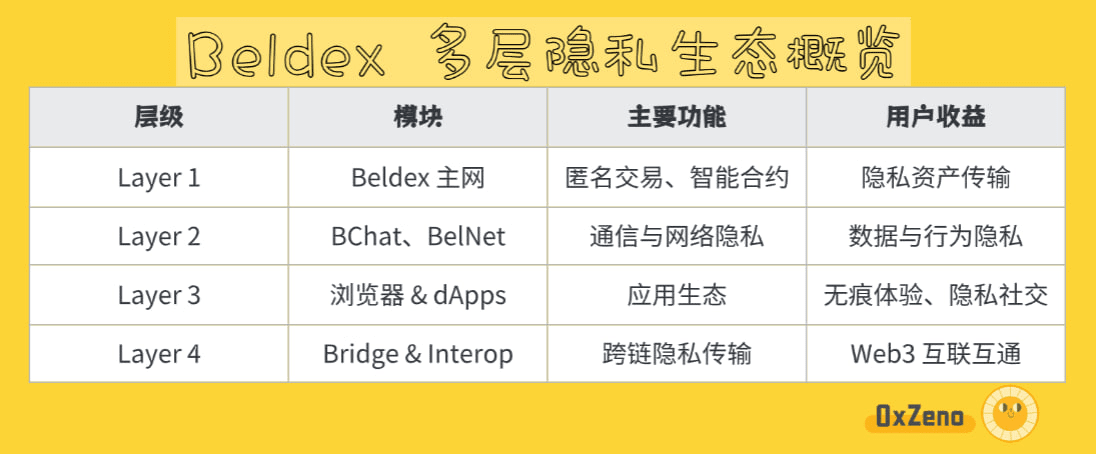📝 Hello everyone, I am 𝟏𝟎, welcome back to the #Blockchain Development History research series. In this article, I will take you through the privacy ecosystem of Beldex from transactions, communications to networks.
After researching Monero, Zcash, Secret, and Aleph Zero, I found that Beldex's goal is not just to be a privacy coin, but to build a complete privacy ecosystem: transactions, communications, networks, and browsers, creating a sustainable decentralized privacy network.
👇👇👇
1. From Anonymous Coins to Privacy Ecosystem: The Evolution Path of Beldex
Beldex (BDX) was initially just an anonymous transaction network based on the CryptoNote protocol, aimed at providing users with a secure, private, and untraceable cryptocurrency payment experience. However, the project team quickly realized that privacy is not just about the anonymity of funds, but also concerns the autonomy of data, communication, and behavior.
Thus, Beldex began to evolve toward a more complete privacy ecosystem, successively launching decentralized private chat tool BChat, decentralized VPN network BelNet, a privacy browser integrated with BelNet, as well as Beldex Bridge and cross-chain plans for providing privacy protection for cross-chain assets. Through this bottom-up ecological expansion, Beldex has evolved from a single anonymous coin into a blockchain network building privacy infrastructure.
2. Core module analysis: Technology and vision in parallel.
1. BChat: The decentralized communication revolution.
Traditional chat tools, even if encrypted, rely on centralized servers, posing a single point of risk. The innovation of BChat lies in the fact that messages are relayed through the Beldex Masternode network, bypassing centralized servers. Each message is encrypted, segmented, and routed through multiple hops, with nodes only knowing the preceding and succeeding hops, unable to reconstruct the complete path.
Result: No party can track the communication between both parties, achieving true end-to-end anonymity. Currently, BChat is one of the few viable decentralized privacy communication solutions.
2. BelNet: A foundational layer for private internet surfing
BelNet is a decentralized VPN (dVPN) system based on Beldex. Traditional VPNs rely on the promise of service providers not to log, while BelNet replaces trust with technology:
Nodes are open and distributed; data packets are encrypted and forwarded by multiple nodes; users can randomly select routing paths, with no central control. I believe it is one of the components in the Beldex architecture that has the most potential to drive user growth.
3. Beldex anonymous transactions: The cornerstone of privacy currency.
Beldex retains the core features of privacy coins: ring signatures, one-time addresses, and concealed amounts (RingCT), ensuring that transactions cannot be tracked.
Similar to Monero, but with a greater emphasis on ecological interoperability and cross-chain potential. As BelNet and BChat users grow, anonymous transactions, communication, and network access will form a complete closed loop.
3. Ecological collaboration: From points to a comprehensive privacy network
Analyzing Beldex's roadmap, I found that it is building a privacy system using ecological layers, and the bottom-up layout reminds me of the early Ethereum ecosystem. The difference is that Beldex focuses more on the infrastructure of privacy freedom. When BChat, BelNet, and the browser are interconnected, the entire system resembles a prototype of a privacy internet.

4. Privacy is the next reconstruction of internet power.
I believe that the future internet will inevitably split into two models: one is a centralized world where data is controlled by platforms; the other is a decentralized privacy society where user data cannot be tracked or abused.
Beldex is attempting to make the latter a reality. When people start chatting with BChat, browsing the internet with BelNet, and accessing the world through the Beldex browser, that will be the true Web3.



